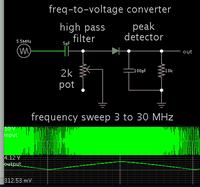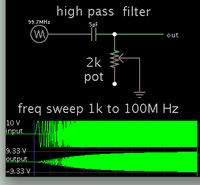neazoi
Advanced Member level 6
Is there any way to build a simple frequency to voltage converter for HF?
Discrete components way is preferred, if possible.
I will be using this in a AFC system to correct the frequency of an LC oscillator.
Discrete components way is preferred, if possible.
I will be using this in a AFC system to correct the frequency of an LC oscillator.

